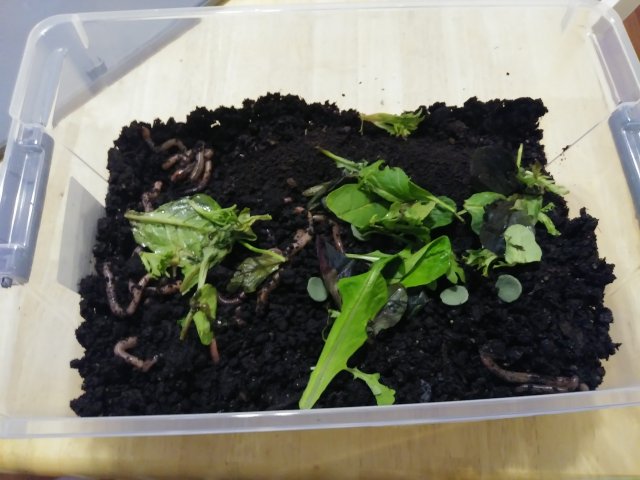I don't use a wide variety of live foods but night crawlers and red wrigglers are a steady favorite for my fish and axolotls. I dont just buy a tin at the bait shop tho.
Worms that may have been in the container for a long time are usually starved and hold less nutritional value.
Setting up your own colony to feed and condition the worms before giving them to the fish is not hard. A plastic tote half filled with organic soil has served me well to house them. To feed them I use stale and expired fish food, pleco wafers, culled fry or if a small fish passes away it goes to the worms and unseasoned/raw vegetable scraps. Moisten the soil with old fish water from a water change once a week. Punch air holes in the lid of the tote for air exchange and store in a cool dark place.
You'll see a difference between worms right out of the store container and ones you've been feeding. Worms that have been starved feel loose and thin and they don't react much when you touch them. Healthy worms are plump and firm and they struggle a bit when disturbed.
I rinse and hand strip worms before feeding them to my fish. This just means that I squeeze it length wise through my fingers to force the worm to evauate all the contents of its intestines under cold running water.
Not every one uses live foods. There are pros and cons to it. This is just a way of doing it that I have had good results with. I'd be interested in hearing what methods and other inverts others use.
Worms that may have been in the container for a long time are usually starved and hold less nutritional value.
Setting up your own colony to feed and condition the worms before giving them to the fish is not hard. A plastic tote half filled with organic soil has served me well to house them. To feed them I use stale and expired fish food, pleco wafers, culled fry or if a small fish passes away it goes to the worms and unseasoned/raw vegetable scraps. Moisten the soil with old fish water from a water change once a week. Punch air holes in the lid of the tote for air exchange and store in a cool dark place.
You'll see a difference between worms right out of the store container and ones you've been feeding. Worms that have been starved feel loose and thin and they don't react much when you touch them. Healthy worms are plump and firm and they struggle a bit when disturbed.
I rinse and hand strip worms before feeding them to my fish. This just means that I squeeze it length wise through my fingers to force the worm to evauate all the contents of its intestines under cold running water.
Not every one uses live foods. There are pros and cons to it. This is just a way of doing it that I have had good results with. I'd be interested in hearing what methods and other inverts others use.










